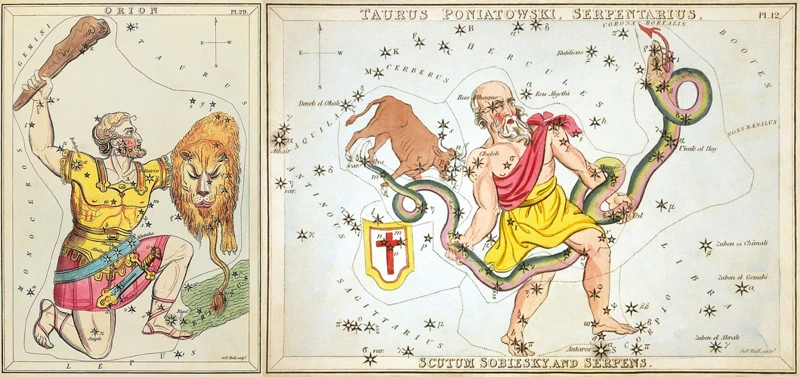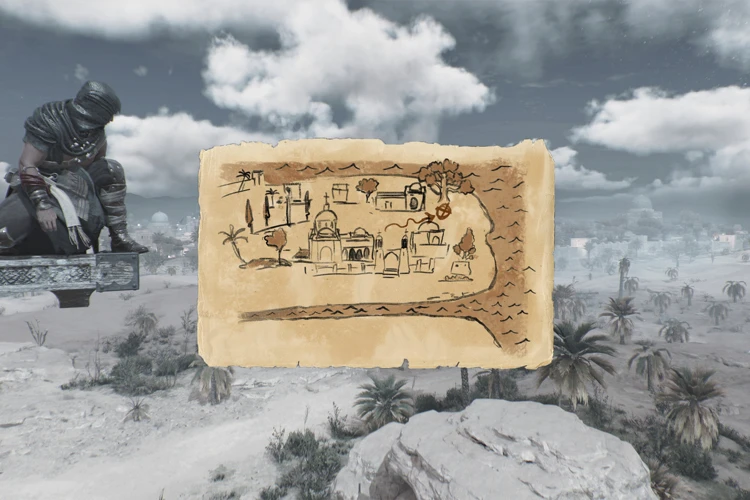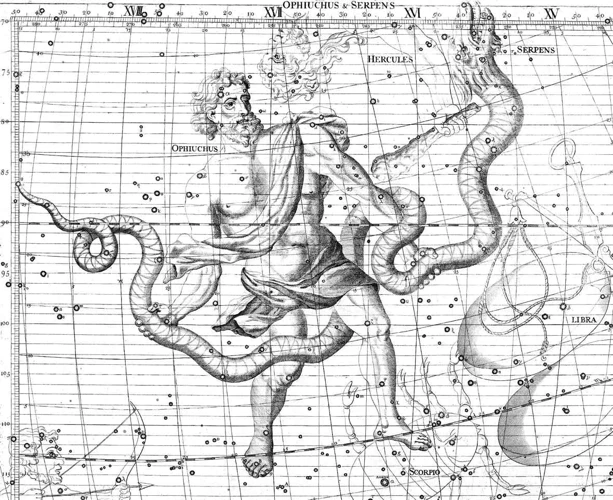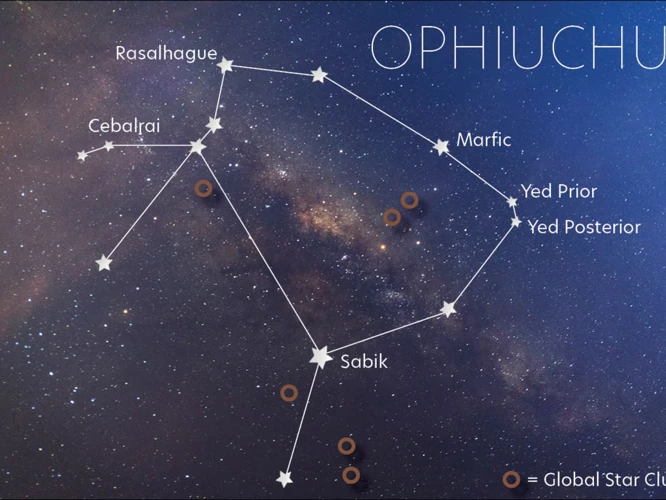Native American mythology is a rich and fascinating tapestry of stories and beliefs, deeply rooted in the connection between humanity and the natural world. The influence of nature in these myths is profound, shaping the beliefs, values, and rituals of Native American cultures throughout history. From the powerful animal spirits that embody both the strength and wisdom of the animal kingdom to the sacred landscapes that hold deep spiritual significance, the natural world is revered and respected in Native American mythology. This article explores the various aspects of nature’s influence on Native American mythology, including animal totems, elemental forces, creation myths, seasonal cycles, and more. Prepare to be captivated by the mystical realms and ancient wisdom that lie within the heart of Native American mythology.
Contents
- The Power of Nature
- Sacred Landscapes
- Creation Myths
- Seasonal Cycles
- Animal Totems
- Conclusion
-
Frequently Asked Questions
- 1. How do animals play a role in Native American mythology?
- 2. What are elemental forces in Native American mythology?
- 3. Why are mountains and peaks significant in Native American mythology?
- 4. How do rivers and waterfalls play a role in Native American mythology?
- 5. Why are forests and trees important in Native American mythology?
- 6. Who is the Great Spirit in Native American mythology?
- 7. What is the significance of the Earth Mother in Native American mythology?
- 8. Who is the Sky Father in Native American mythology?
- 9. How are seasonal cycles depicted in Native American mythology?
- 10. What do animal totems represent in Native American mythology?
- References
-
Frequently Asked Questions
- 1. How did Native American mythology explain natural phenomena?
- 2. What are some examples of animal spirits in Native American mythology?
- 3. How did Native Americans view sacred landscapes?
- 4. Why were mountains and peaks important in Native American mythology?
- 5. How did Native Americans perceive the seasons?
- 6. What is the significance of animal totems in Native American mythology?
- 7. What does the Great Spirit represent in Native American mythology?
- 8. What role does the Earth Mother play in Native American mythology?
- 9. How did Native Americans associate specific qualities with different elements?
- 10. How did Native American mythology influence modern-day environmental awareness?
- References
- Read More
The Power of Nature

The power of nature in Native American mythology is a fundamental aspect that shapes their spiritual beliefs and understanding of the world. Through their deep connection with the natural world, Native Americans recognize and honor the profound influence of animal spirits and elemental forces. Animal spirits play a significant role as guides, teachers, and protectors in Native American mythology. Each animal is believed to possess unique qualities and wisdom, such as the strength of the bear, the grace of the eagle, or the loyalty of the wolf. These animal spirits are seen as powerful allies and sources of inspiration for individuals seeking guidance and strength. Additionally, the elemental forces of nature, such as wind, water, fire, and earth, are revered and respected for their immense power and ability to shape the world. Native Americans understand that these forces are interconnected with all aspects of life and play a crucial role in maintaining balance and harmony within the universe. The power of nature in Native American mythology is a constant reminder of the interconnectedness of all living beings and the need to live in harmony with the natural world.
1. Animal Spirits
Native American mythology is steeped in a deep reverence for the animal spirits that inhabit the natural world. These spirits are seen as powerful guides and teachers, embodying the wisdom and qualities of their respective animal counterparts. In Native American cultures, each animal is believed to possess unique characteristics and strengths that can be harnessed and learned from. For example, the bear is revered for its strength, courage, and protective nature. It is often seen as a symbol of healing and inner wisdom. The eagle, with its ability to soar high in the sky, is associated with vision, spiritual insight, and a connection to the divine. It is seen as a messenger between the earthly and spiritual realms. The wolf is highly respected for its loyalty, teamwork, and hunting prowess, symbolizing unity, family, and survival. Native Americans often seek guidance and protection from these animal spirits through rituals, ceremonies, and vision quests. These encounters with animal spirits provide individuals with valuable lessons, insights, and direction in their lives. The deep connection between Native Americans and animal spirits showcases their belief in the interconnectedness of all living beings.
2. Elemental Forces
In Native American mythology, the elemental forces hold a significant place of reverence and importance. These forces, which include wind, water, fire, and earth, are seen as powerful entities that shape the world and influence human existence. Each elemental force embodies distinct qualities and symbolism that is deeply intertwined with Native American culture. The wind represents communication, freedom, and change. It is believed to carry messages from the spirits and serve as a conduit between the physical and spiritual realms. Water, on the other hand, is associated with emotions, purification, and healing. Native Americans view water as a life-giving force that not only sustains physical existence but also cleanses and rejuvenates the soul. Fire, with its transformative power, is seen as both a creator and destroyer. It symbolizes passion, energy, and purification, while also serving as a catalyst for growth and rebirth. Lastly, the earth represents stability, grounding, and connection to the land. It is considered the provider of resources and embodies the wisdom and resilience of nature. The understanding and respect for these elemental forces is deeply ingrained in Native American mythology, shaping their spiritual practices, rituals, and even daily life. It highlights their belief in the interconnectedness of all things and the inherent power that exists within the natural world.
Sacred Landscapes

In Native American mythology, sacred landscapes hold deep spiritual significance and are regarded as portals to the divine. These landscapes, such as mountains, rivers, waterfalls, and forests, are believed to be imbued with powerful energy and inhabited by spirits. Mountains and peaks are seen as points of connection between the Earth and the sky, representing strength and a closer proximity to the heavens. Rivers and waterfalls symbolize the flow of life and the cleansing and purifying properties of water. Forests and trees are considered sacred as they provide shelter, sustenance, and a connection to the realm of spirits. Native Americans hold ceremonies, rituals, and pilgrimages within these sacred landscapes to honor and commune with the spiritual forces present. Each sacred landscape has its own unique energy and significance, offering individuals a sense of awe, wonder, and a deepened connection to the natural world and the divine.
1. Mountains and Peaks
Mountains and peaks hold a special significance in Native American mythology, representing a connection to the spiritual realm and a source of guidance and protection. In many tribal traditions, mountains are considered sacred landscapes that serve as a bridge between the physical and spiritual worlds. They are often associated with the dwelling places of powerful spirits or deities. Native Americans believe that mountains can communicate messages from the divine and provide wisdom to those who seek it. The towering peaks are seen as symbols of strength, resilience, and endurance. They inspire individuals to overcome challenges and reach new heights in their personal journeys. The sacredness of mountains is further emphasized through rituals and ceremonies that take place in their presence. Native American tribes would often climb mountains as a way of seeking visions, spiritual enlightenment, or a connection with their ancestors. Mountains and peaks also serve as navigational landmarks, guiding travelers on their journeys with their distinct profiles and geographical features. They are revered as natural compasses that lead people safely through the wilderness. The significance of mountains in Native American mythology extends beyond their physical characteristics. They embody the spiritual essence of the land and the profound understanding of the interconnectedness of all beings. Through their reverence for mountains and peaks, Native Americans honor the power and majesty of nature, recognizing it as a source of wisdom and guidance in their lives. This deep appreciation for the natural world is a guiding principle in Native American cultures and continues to be passed down through generations.
[Link: /retrograde-planets-horoscope-predictions-secrets-unveiled/]
2. Rivers and Waterfalls
Rivers and waterfalls hold a significant place in Native American mythology, representing both the physical and spiritual aspects of life. These natural bodies of water are seen as sacred and vital sources of sustenance, symbolizing the flow of life and the cyclical nature of existence. In Native American belief systems, rivers are often regarded as pathways of spiritual journey and transformation. They are seen as powerful forces that connect different realms and serve as conduits for communication with the spiritual realm. Waterfalls, with their majestic beauty and thunderous roar, are believed to be gateways to the spiritual world, where messages from ancestors or spirits can be received. Native Americans often perform rituals and ceremonies near rivers and waterfalls, seeking purification, renewal, and spiritual guidance. They offer prayers and offerings, expressing gratitude for the life-giving properties of water. The significance of rivers and waterfalls in Native American mythology extends beyond the physical realm, emphasizing the interconnectedness between humans, nature, and the spiritual realm. This connection with water highlights the importance of sustainability, respect, and reverence for the natural world as a source of life and spiritual nourishment.
3. Forests and Trees
Forests and trees hold a significant place in Native American mythology, representing a connection to the natural world and serving as sacred spaces for spiritual practices and rituals. Within the Native American belief system, forests are regarded as living entities, filled with powerful energy and inhabited by spirits. Native American tribes often seek solace and wisdom in the depths of the forest, engaging in meditative practices and seeking guidance from the spirits that reside there. Trees, in particular, are revered for their strength, wisdom, and ability to communicate with both the spiritual and physical realms. Each tree is believed to possess its own unique spirit, known as a tree spirit or tree guardian, which offers protection and guidance to those who honor and respect it. Native American folklore is replete with stories of individuals who received messages or visions from tree spirits, providing insight, healing, and spiritual growth. The oak tree, for example, is often associated with wisdom and strength, while the cedar tree is believed to possess healing properties and the ability to purify negative energy. The forest and the trees within it symbolize the interconnectedness of all living beings and the importance of respecting and protecting the natural world. They serve as reminders of the delicate balance between humanity and nature, urging individuals to live harmoniously with their surroundings. In Native American mythology, forests and trees are not just physical entities but gateways to the spiritual realm, and their presence is essential for maintaining balance and spiritual well-being.
Creation Myths

Creation myths hold a central place in Native American mythology, providing insight into the origins of the world and the role of divine beings. These myths often involve a Great Spirit, a supreme being who oversees creation and brings order to the universe. The Great Spirit is believed to have shaped the earth, the sky, and all living things. Another important figure in creation myths is the Earth Mother, a nurturing and life-giving entity associated with fertility and the abundance of nature. The Earth Mother is often depicted as a wise and benevolent presence, responsible for the growth and sustenance of all living beings. Additionally, the Sky Father, representing the heavens and the celestial realm, is part of many creation stories. He brings light and harmony to the world, working in harmony with the Earth Mother to maintain balance. These creation myths offer profound insight into Native American beliefs about the origins of existence and the sacredness of the natural world. To delve deeper into the rich mythologies of other cultures, you can explore Japanese mythology in anime and manga, which showcases a unique blend of ancient folklore and popular entertainment.
1. The Great Spirit
The Great Spirit holds a central place in Native American mythology, representing the ultimate divine entity and the source of all creation. It is often depicted as a wise and benevolent deity who is responsible for bringing forth life and establishing the natural order of the world. The Great Spirit is believed to be present in everything, from the vastness of the sky to the smallest blade of grass, symbolizing the interconnectedness of all living beings. Many tribes have unique names for the Great Spirit, such as Okchee Manitou, Wakan Tanka, or Orenda, showcasing the diversity of beliefs across different Native American cultures. The Great Spirit is seen as a guiding force, offering wisdom, protection, and spiritual guidance to those who seek it. The relationship between individuals and the Great Spirit is deeply personal, with rituals and ceremonies held to honor and communicate with this divine entity. Native American mythology teaches that by living in harmony with the Great Spirit and following its teachings, individuals can find balance and purpose in their lives. The concept of the Great Spirit demonstrates the reverence and respect Native Americans have for the divine presence in nature and the belief in a higher power that governs the universe.
2. Earth Mother
In Native American mythology, the concept of the Earth Mother holds great significance and reverence. The Earth Mother is seen as a nurturing and giving entity, embodying the fertility and abundance of the land. She is often depicted as a powerful and wise deity who is deeply connected to all living beings and the natural world. Through her maternal presence, the Earth Mother provides sustenance, shelter, and protection to both humans and animals alike. Native American tribes believe that the Earth Mother is responsible for the creation and sustenance of life on Earth. She is seen as the ultimate source of all life-giving elements, including water, plants, and animals. The Earth Mother is often associated with the cycles of birth, growth, and regeneration, symbolizing the never-ending circle of life. Her presence is deeply felt in the fertile soil, the bountiful harvests, and the diverse ecosystems that thrive under her care. Native Americans hold great respect and gratitude for the Earth Mother, understanding that they are interconnected with her and have a responsibility to nurture and protect the natural world. The Earth Mother is an integral part of Native American mythology, representing the sacred bond between humans and the land they inhabit.
3. Sky Father
The Sky Father is a central figure in Native American mythology, representing the celestial realm and embodying the power of the heavens. This deity is often associated with the sun, moon, and stars, serving as the guardian of the skies. In many Native American creation myths, the Sky Father plays a crucial role in the formation of the world. He is seen as the creator who breathes life into the Earth and all its inhabitants. The Sky Father is believed to have control over the weather, influencing the cycles of the seasons and bringing rain, sunshine, and storms. Native American tribes attribute different names and characteristics to the Sky Father based on their unique cultural perspectives. For example, the Lakota people refer to him as Wi, while the Hopi people know him as Taiowa. Regardless of the specific name, the Sky Father symbolizes the limitless potential and spiritual connection between the celestial and earthly realms.
Seasonal Cycles

The seasonal cycles hold great significance in Native American mythology, representing the eternal cycle of life, death, and rebirth. Each season is associated with unique characteristics and symbols that reflect the interconnectedness of nature and human existence. During summer and sun, the warmth and abundance of the sun are celebrated, representing growth, vitality, and the fruition of nature’s bounties. It is a time of celebration and gratitude for the blessings bestowed upon the land. In contrast, winter and snow are seen as transformative and introspective periods, where the earth rests, and the cold brings stillness and reflection. Winter is also associated with storytelling and passing down knowledge from one generation to another. With the arrival of spring and renewal, nature awakens from its slumber, symbolizing rebirth, fertility, and new beginnings. The blossoming of flowers, the return of migratory birds, and the budding of trees represent hope, growth, and the cyclical nature of life. The seasonal cycles in Native American mythology teach valuable lessons about the impermanence of life and the need to embrace change and find balance within ourselves and the world around us.
1. Summer and Sun
In Native American mythology, summer and the sun hold a special place of significance and reverence. Summer, characterized by warmth and abundance, represents a time of growth, vitality, and transformation. The sun, a powerful celestial entity, is often seen as a symbol of strength, light, and life-giving energy. Native American tribes across different regions have their own unique stories and beliefs associated with the summer and the sun. For example, some tribes view the sun as a divine being, responsible for bringing light and heat, nurturing crops, and sustaining life on Earth. The sun’s path across the sky is believed to hold sacred teachings and lessons about balance, cycles, and the interconnectedness of all things. It is also associated with concepts of power, leadership, and enlightenment. In ceremonies and rituals, Native Americans often offer gratitude to the sun for its vital role in sustaining life and seek blessings for bountiful harvests and spiritual growth. The reverence for summer and the sun in Native American mythology reinforces the deep connection and respect for the natural world and its cyclical patterns of change. The sun’s warmth and life-giving energy are celebrated as gifts from the divine, reminding individuals of their place within the larger web of existence and the importance of honoring and harmonizing with the natural world around them.
2. Winter and Snow
In Native American mythology, the season of winter and the presence of snow are deeply symbolic and hold significant meanings. Winter represents a time of introspection, reflection, and the restoration of balance. It is a season where the Earth rests and rejuvenates, preparing for the renewal of spring. The falling snow is seen as a spiritual cleansing, covering the land in a pristine blanket, offering a fresh start and a sense of purity. Native American tribes view the winter months as a period of spiritual growth and transformation. It is a time to turn inward, seek inner wisdom, and connect with the ancestors. The tranquility and stillness of the winter landscape also encourage contemplation and self-discovery. Within the Native American belief system, snow is often associated with purity, beauty, and harmony. It is believed that the gentle touch of snowflakes brings healing and balance to the world, purifying the spirit and bringing a sense of peace. This connection to the winter season and snow is also deeply rooted in the cycle of life, as it represents the necessary moments of dormancy and rest before new growth and regeneration can occur. Winter and snow are celebrated in Native American mythology as a time of transformation, healing, and the embrace of the natural rhythms of life.
3. Spring and Renewal
In Native American mythology, the arrival of spring brings a sense of renewal and transformation. It is a time when the earth awakens from its slumber, and new life emerges in abundance. For many Native American tribes, spring represents a time of rebirth and growth, symbolizing the cycle of life. The thawing of winter’s frost gives way to the blossoming of colorful flowers and the return of migratory birds. The spirit of spring is embodied by the emergence of plants, which provide sustenance and healing to the people. Native Americans hold ceremonies and rituals to honor the return of life and express gratitude for the bountiful gifts of spring. It is also a time for cleansing and purification, both physically and spiritually. The melting snow and flowing rivers signify the washing away of the old and the welcoming of the new. Spring is a time of hope, renewal, and the celebration of the interconnectedness between humanity and nature. Through rituals and traditions focused on spring, Native American tribes acknowledge the cyclical nature of life and the importance of embracing change and growth. It serves as a reminder of the continuous cycles of existence and the opportunity for personal and collective transformation. Astrology and the study of celestial movements play a part in some Native American cultures during spring, as they look to the guidance of the stars and planets for insight into future events and the energies of the season.
Animal Totems

Animal totems hold great significance in Native American mythology, serving as powerful symbols and spiritual guides for individuals and communities. Each animal totem represents specific qualities and characteristics, embodying the essence of that particular animal and its wisdom. One notable animal totem is the bear, symbolizing strength, courage, and protection. The bear is seen as a mighty and formidable creature, teaching lessons of resilience and survival. Another revered animal totem is the eagle, embodying grace, vision, and freedom. The eagle is considered a messenger between the earthly and spiritual realms, offering guidance and insight. The wolf is yet another revered animal totem, known for its loyalty, intuition, and teamwork. Wolves are seen as guardians and teachers, guiding individuals in navigating their own journeys. Whether it’s the bear, eagle, wolf, or any other animal totem, these powerful symbols remind individuals of their connection to the natural world and provide guidance on embracing the qualities and virtues represented by these animals.
1. Bear
The bear holds a significant place in Native American mythology, symbolizing power, strength, and wisdom. In many tribes, the bear is considered the king of the animals. It is revered for its physical prowess, symbolizing courage and protection. Native American tribes believed that bears had healing abilities and possessed a deep connection with the spirit world. The bear is often associated with dreams and visions, with its presence representing a call to explore one’s inner world and seek spiritual guidance. It is also seen as a teacher and guide, with many tribes incorporating bear imagery and characteristics into their rituals and ceremonies. The bear’s hibernation during the winter months is seen as a symbol of rebirth and transformation, representing the cyclical nature of life. The bear serves as a reminder to Native Americans of the strength and resilience within themselves and the importance of respecting and honoring the natural world.
2. Eagle
The eagle holds a special place in Native American mythology, symbolizing strength, freedom, and wisdom. Considered the messenger between humans and the divine, the eagle is revered as a spiritual guide and a link to the heavens. In many Native American cultures, the sighting of an eagle is considered a sacred event and brings a sense of awe and reverence. Known for its keen vision, the eagle is associated with foresight and clarity of thought, guiding individuals in making important decisions and providing insight into the future. With its ability to soar high in the sky, the eagle is believed to have a close connection to the Great Spirit or the Creator. Its majestic flight represents the pursuit of higher ideals, encouraging individuals to reach for their dreams and embrace their true potential. The eagle is often depicted with outstretched wings, symbolizing protection and guardianship. As a totem animal, the eagle instills a sense of courage, resilience, and adaptability, inspiring individuals to overcome challenges and rise above adversity. Its significance in Native American mythology resonates with the belief in the interconnectedness of all living beings and the aspiration to live in harmony with nature and the spiritual realm.
3. Wolf
The wolf holds a significant place in Native American mythology as a powerful and revered animal totem. Symbolizing loyalty, courage, and strength, the wolf is seen as a spiritual guide and protector. Native American tribes believe that wolves possess deep wisdom and a strong connection to the spiritual realm. They are regarded as teachers who can impart valuable lessons and guidance to those who seek it. The wolf’s strong sense of community and loyalty to its pack is also highly valued in Native American culture. It is seen as a reminder of the importance of family and unity within tribes. In some tribes, the wolf is considered a guardian spirit, offering protection and guidance during times of transition or spiritual journeys. Legends and stories often depict the wolf as a wise and noble creature, embodying the balance between instinct and intellect. Native Americans deeply respect the wolf and its role in the natural world, understanding its crucial place in the delicate web of life. By honoring the wolf as a totem, individuals seek to embody its qualities, embracing strength, loyalty, and a deep connection to the spiritual realm.
Conclusion

In conclusion, the influence of nature in Native American mythology is profound and far-reaching. The rich tapestry of stories, beliefs, and rituals showcases the deep reverence and connection that Native Americans have with the natural world. From the animal spirits that embody strength and wisdom to the sacred landscapes that hold deep spiritual significance, nature is recognized as a powerful force within Native American culture. The creation myths that speak of the Great Spirit, Earth Mother, and Sky Father further emphasize the intimate relationship between humanity and the natural world. The seasonal cycles, symbolized by summer and sun, winter and snow, and spring and renewal, highlight the ever-changing nature of life and the interconnectedness of all things. Even the animal totems, such as the bear, eagle, and wolf, serve as reminders of the harmonious coexistence between humans and the animal kingdom. Native American mythology teaches us the importance of respecting and honoring nature, for it is through this connection that we find wisdom, guidance, and a sense of belonging. As we delve into the enchanting realms of Native American mythology, we are reminded of the enduring power and beauty of the natural world, and the need to cherish and protect it for generations to come.
Frequently Asked Questions

1. How do animals play a role in Native American mythology?
In Native American mythology, animals are symbolic representations of various qualities and characteristics. They are seen as guides, protectors, and sources of wisdom for individuals. Animal spirits are believed to possess unique powers and are revered as important spiritual beings.
2. What are elemental forces in Native American mythology?
Elemental forces in Native American mythology refer to the fundamental elements of nature, such as wind, water, fire, and earth. These forces are considered powerful and are believed to have a profound impact on the world and its inhabitants.
3. Why are mountains and peaks significant in Native American mythology?
Mountains and peaks hold great spiritual significance in Native American mythology. They are often regarded as sacred spaces where individuals can connect with the spiritual realm, seek guidance, or perform rituals. Mountains are seen as places of strength, wisdom, and enlightenment.
4. How do rivers and waterfalls play a role in Native American mythology?
Rivers and waterfalls hold deep symbolic meaning in Native American mythology. They are associated with the flow of life, purification, and rejuvenation. These natural water bodies are often considered sacred and are used for healing rituals and spiritual cleansing.
5. Why are forests and trees important in Native American mythology?
Forests and trees are regarded as sacred and essential in Native American mythology. They are seen as the dwelling places of spirits, and their abundance represents abundance and fertility. Trees are often used as symbols of wisdom, strength, and connection to the spiritual world.
6. Who is the Great Spirit in Native American mythology?
The Great Spirit is a central deity in many Native American mythologies. It is a divine and all-encompassing force that is believed to be the creator of the universe and the source of all life. The Great Spirit is associated with wisdom, guidance, and protection.
7. What is the significance of the Earth Mother in Native American mythology?
The Earth Mother, also known as Gaia or Mother Earth, is a powerful and nurturing figure in Native American mythology. She represents fertility, abundance, and the interconnectedness of all living beings. The Earth Mother is seen as a provider and protector of life.
8. Who is the Sky Father in Native American mythology?
The Sky Father is a prominent figure in Native American mythology, representing the divine and celestial realm. The Sky Father is associated with power, creation, and the governing of natural forces. He is often depicted as a wise and benevolent deity.
9. How are seasonal cycles depicted in Native American mythology?
Seasonal cycles hold significant symbolism in Native American mythology. Each season, such as summer, winter, and spring, represents different aspects of life and the natural world. They are often associated with themes of growth, transformation, and the circle of life.
10. What do animal totems represent in Native American mythology?
Animal totems in Native American mythology represent spiritual connections and personal qualities. They are chosen or believed to be assigned to individuals as guides and sources of strength. Animal totems embody certain traits and characteristics that individuals can learn from and aspire to cultivate in their lives.
References
Frequently Asked Questions

1. How did Native American mythology explain natural phenomena?
Native American mythology explained natural phenomena through the belief in animal spirits and elemental forces. They believed that animals had spiritual powers and could influence different aspects of nature, while elemental forces such as fire, water, earth, and air played significant roles in shaping the world.
2. What are some examples of animal spirits in Native American mythology?
In Native American mythology, animal spirits were believed to possess unique qualities and powers. Examples include the bear, which symbolized strength and protection, the eagle, which represented freedom and vision, and the wolf, which symbolized loyalty and wisdom.
3. How did Native Americans view sacred landscapes?
Native Americans viewed sacred landscapes as places that held significant spiritual and cultural meanings. Mountains, rivers, and forests were often considered sacred and were believed to be inhabited by powerful spirits and deities.
4. Why were mountains and peaks important in Native American mythology?
Mountains and peaks held great importance in Native American mythology as they were seen as the dwelling places of spiritual beings. They were revered as sacred sites where individuals could go to commune with these powerful entities and seek guidance and protection.
5. How did Native Americans perceive the seasons?
Native Americans perceived the seasons as integral parts of the natural cycle of life. Each season had its symbolism and significance, representing different aspects of the human experience and the perpetual cycles of growth, change, and renewal.
6. What is the significance of animal totems in Native American mythology?
Animal totems played a crucial role in Native American mythology as they were believed to represent specific qualities and characteristics that individuals could embody or seek guidance from. These totems served as spiritual guides and protectors.
7. What does the Great Spirit represent in Native American mythology?
The Great Spirit is a central figure in Native American mythology, representing a supreme being that oversees the universe. It is seen as the creator and sustainer of all life and is associated with wisdom, balance, and harmony.
8. What role does the Earth Mother play in Native American mythology?
In Native American mythology, the Earth Mother is a powerful deity associated with the fertility of the land and the nurturing of life. She is revered as the provider of sustenance and represents the interconnectedness of all living beings.
9. How did Native Americans associate specific qualities with different elements?
Native Americans associated specific qualities with different elements based on their observations of nature. For example, fire was seen as representing transformation and purification, water symbolized emotions and intuition, earth symbolized stability and grounding, and air represented communication and freedom.
10. How did Native American mythology influence modern-day environmental awareness?
Native American mythology’s reverence for nature and its incorporation of ecological principles have had a significant impact on modern-day environmental awareness. Many individuals and organizations have drawn inspiration from these beliefs, promoting conservation and sustainability efforts based on the principles of Native American mythology.







